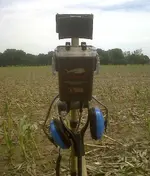AugustMoose87
Sr. Member
- Joined
- Sep 10, 2014
- Messages
- 443
- Reaction score
- 264
- Golden Thread
- 0
- Location
- Longmont, CO
- Detector(s) used
- Gold Pan, Sluice, Hand Dredge, X-Terra 30, X-Terra 705, Sand Shark
- Primary Interest:
- All Treasure Hunting
Trying to better understand hunting fields, be they corn, soy, wheat, etc. Especially interested in the thoughts of those who are further west.
When you look for a field, are you looking in to its history, proximity to something, or do you just pick a field and start swinging (with permission of course)? Places in the east where you could have metal artifacts from almost 400 years ago, I get just hitting any field you can get permission on. But at least here in Colorado, I feel like that would be a HUGE waste of time and energy - zero chance of discovering any kind of unknown colonial, revolutionary, or civil war camp/outpost. I'm going to be pumped just to find an 18XX coin out here.
Also, help me understand the mind set of hunting fields. I know when I'm hunting a campground, playground or beach, I'm looking for thing people lost while there. I'm my mind (since I don't have much history here) the things I am most likely to find are things that fell off a tractor (nuts, bolts, etc.), maybe some parts off older livestock driven equipment, and if I'm REALLY lucky, some coins or jewelry that fell while someone was working.
When you look for a field, are you looking in to its history, proximity to something, or do you just pick a field and start swinging (with permission of course)? Places in the east where you could have metal artifacts from almost 400 years ago, I get just hitting any field you can get permission on. But at least here in Colorado, I feel like that would be a HUGE waste of time and energy - zero chance of discovering any kind of unknown colonial, revolutionary, or civil war camp/outpost. I'm going to be pumped just to find an 18XX coin out here.
Also, help me understand the mind set of hunting fields. I know when I'm hunting a campground, playground or beach, I'm looking for thing people lost while there. I'm my mind (since I don't have much history here) the things I am most likely to find are things that fell off a tractor (nuts, bolts, etc.), maybe some parts off older livestock driven equipment, and if I'm REALLY lucky, some coins or jewelry that fell while someone was working.
Upvote
0






 There's lots of history in Colorado. It's out there.
There's lots of history in Colorado. It's out there.

 But one day, it occurred to me, that if our intent was just to be "roaming random ag. land" for field-worker losses, then it certainly would not be worth it. Because, yes, even though a few modern silver coins, buffalo, wheaties, etc... . had surfaced, yet the ratio for the time we put in (worked it for 15 yrs. now, almost every fallow plow time), would simply not have been worth it.
But one day, it occurred to me, that if our intent was just to be "roaming random ag. land" for field-worker losses, then it certainly would not be worth it. Because, yes, even though a few modern silver coins, buffalo, wheaties, etc... . had surfaced, yet the ratio for the time we put in (worked it for 15 yrs. now, almost every fallow plow time), would simply not have been worth it. ?
?